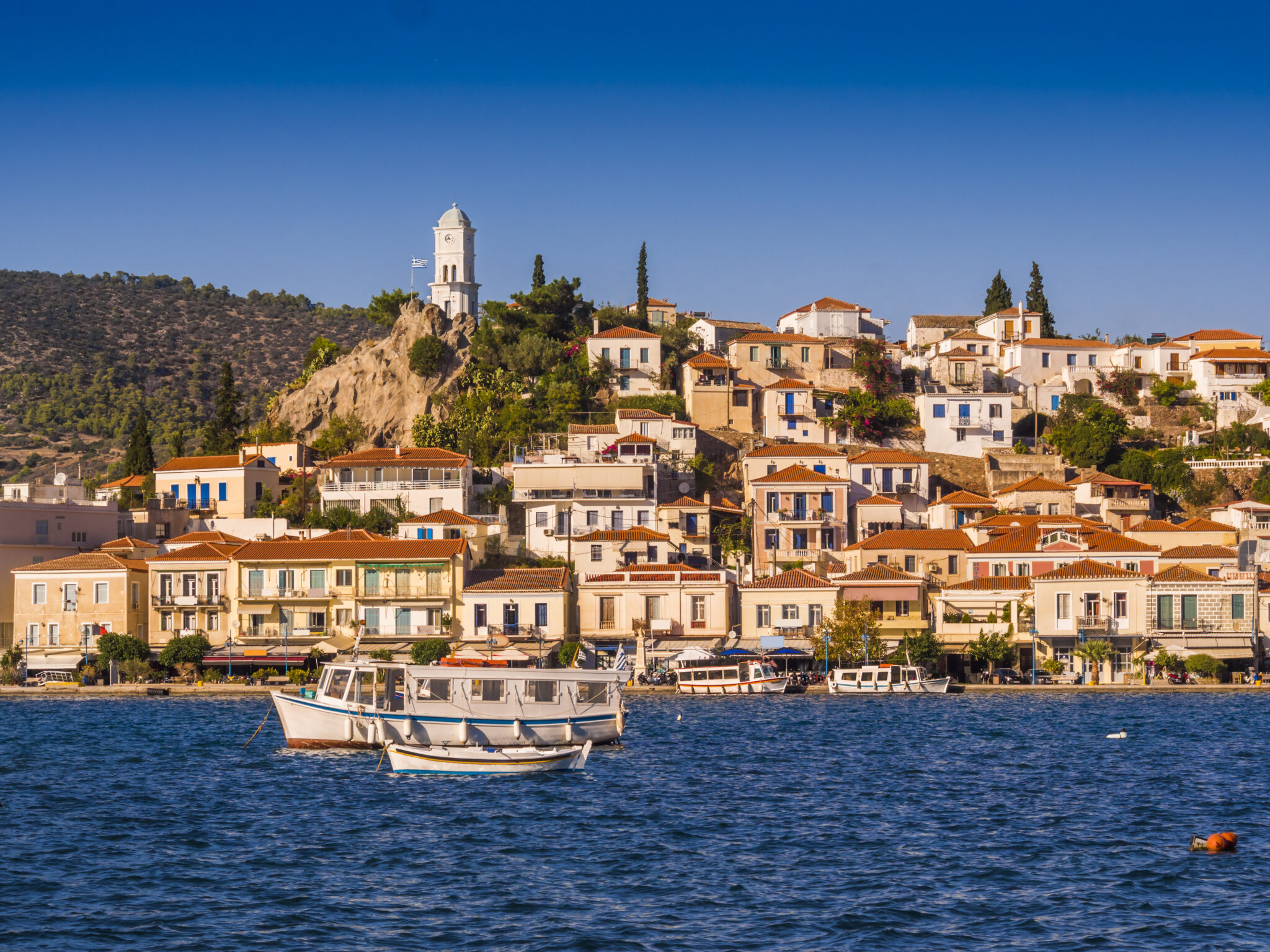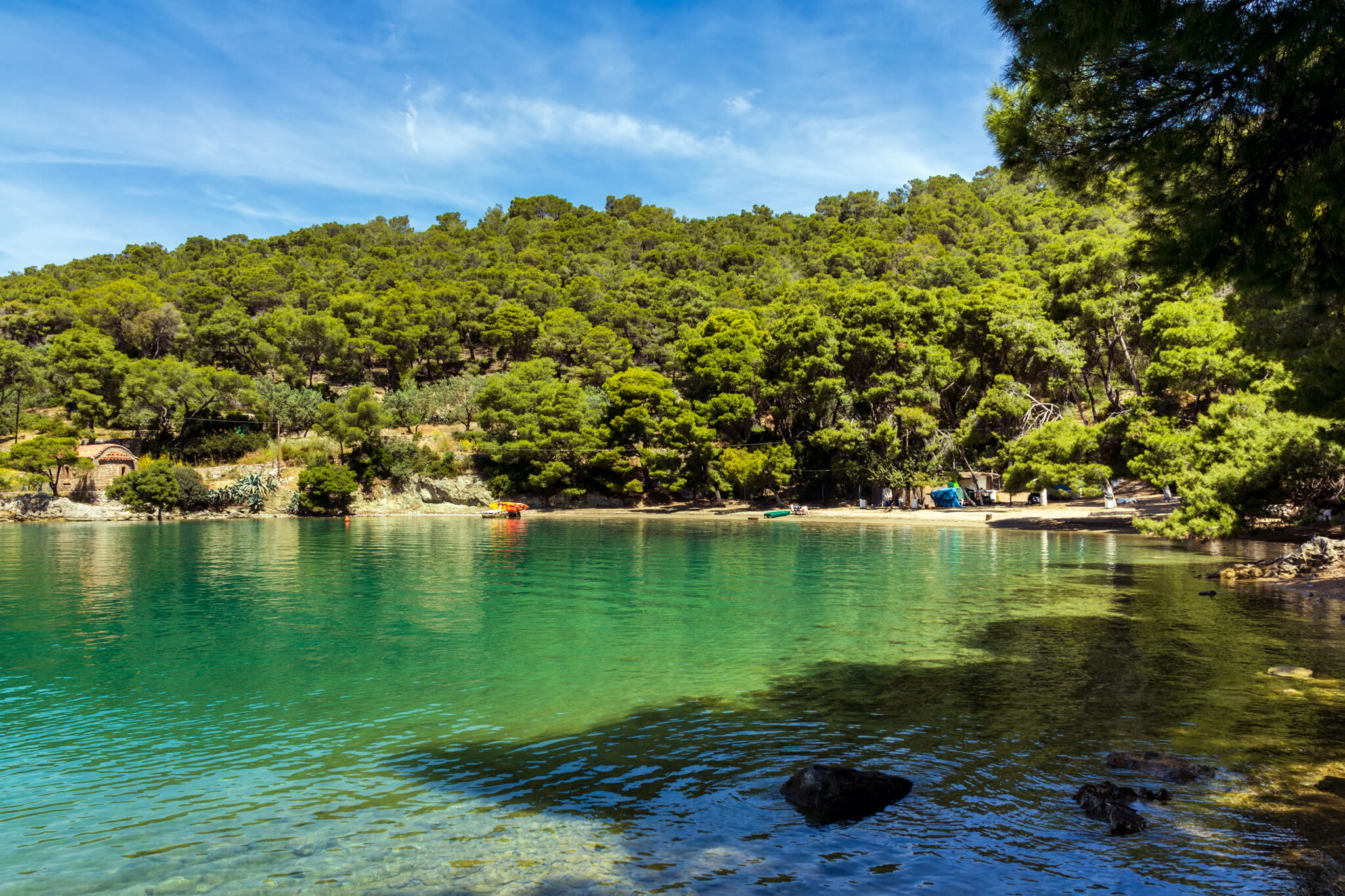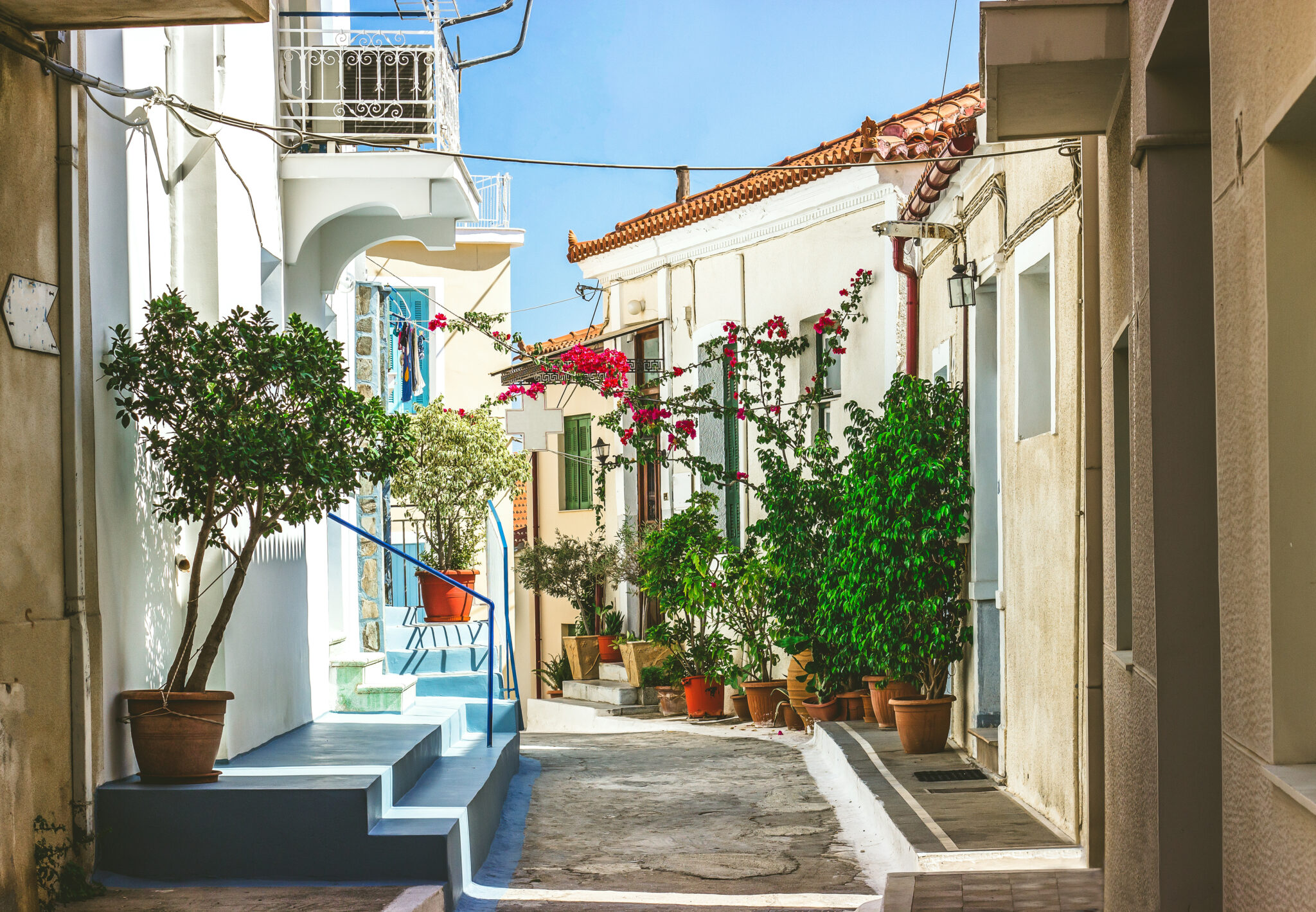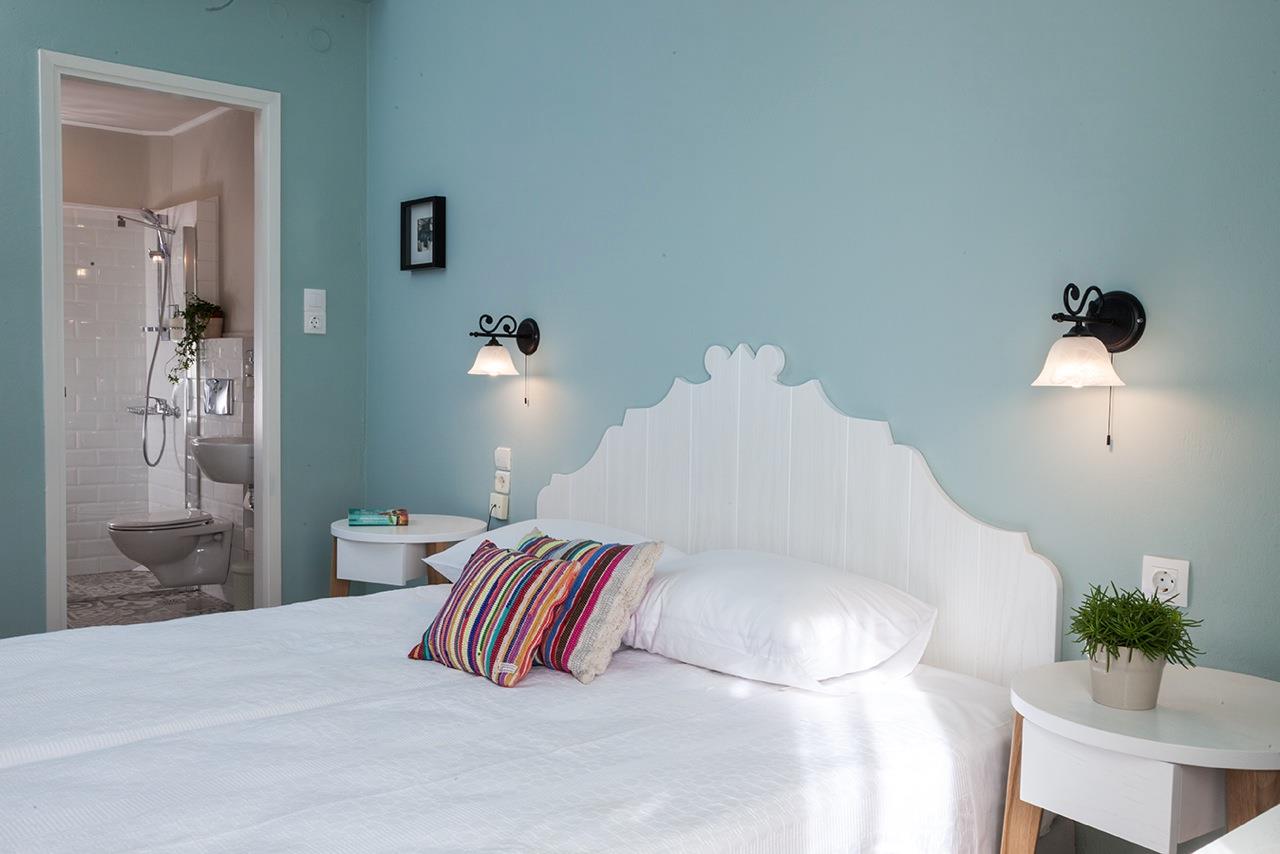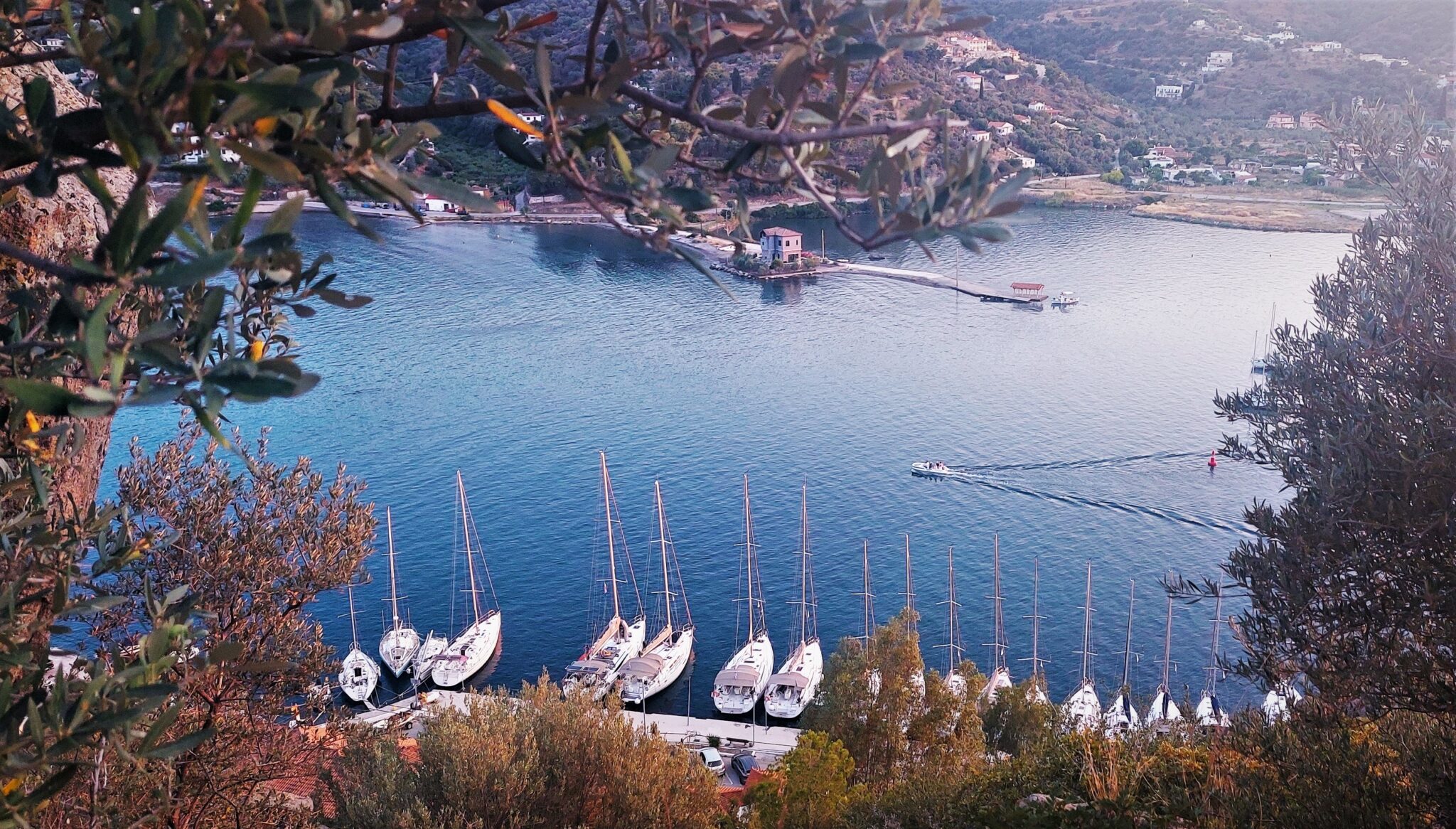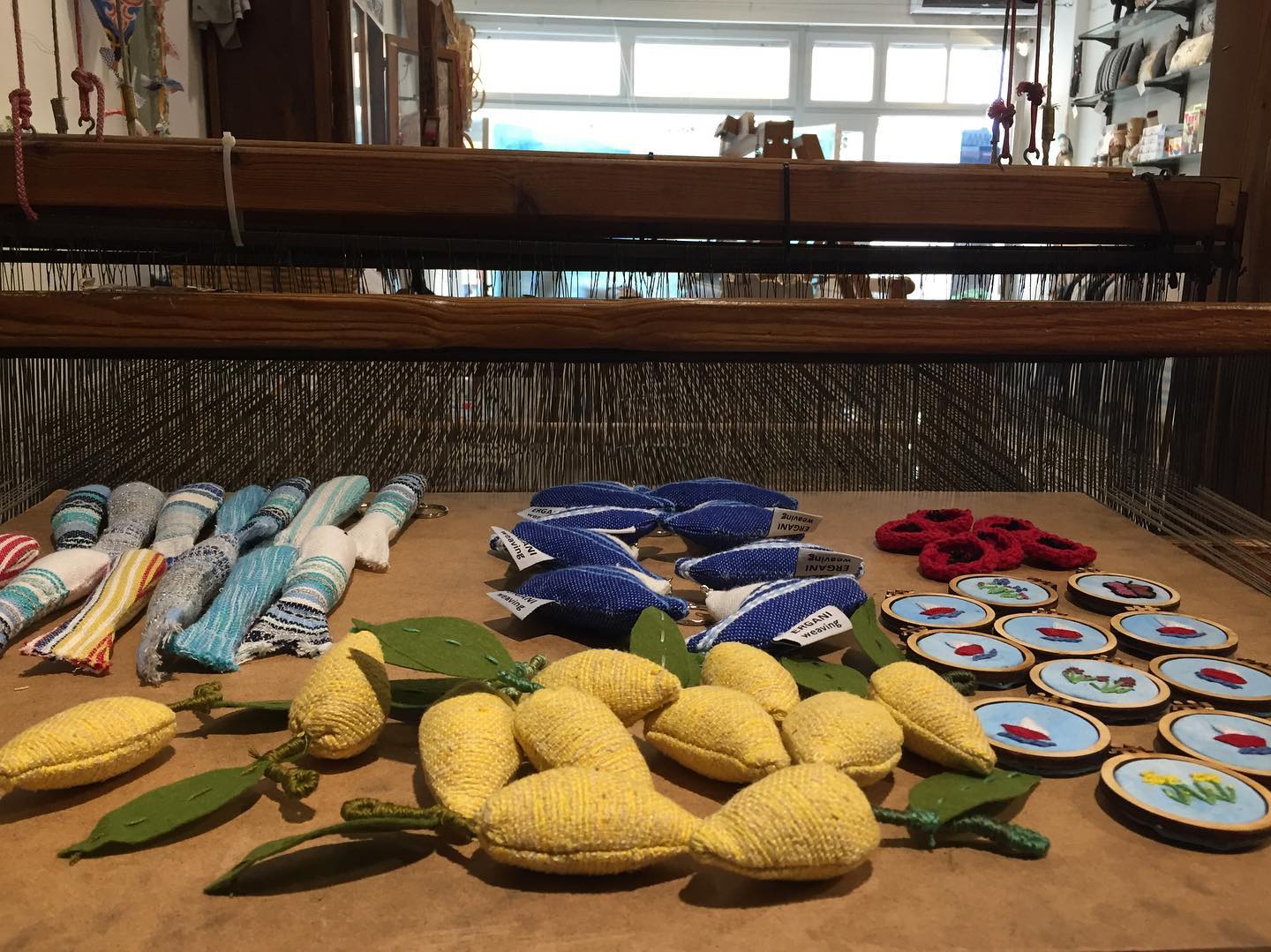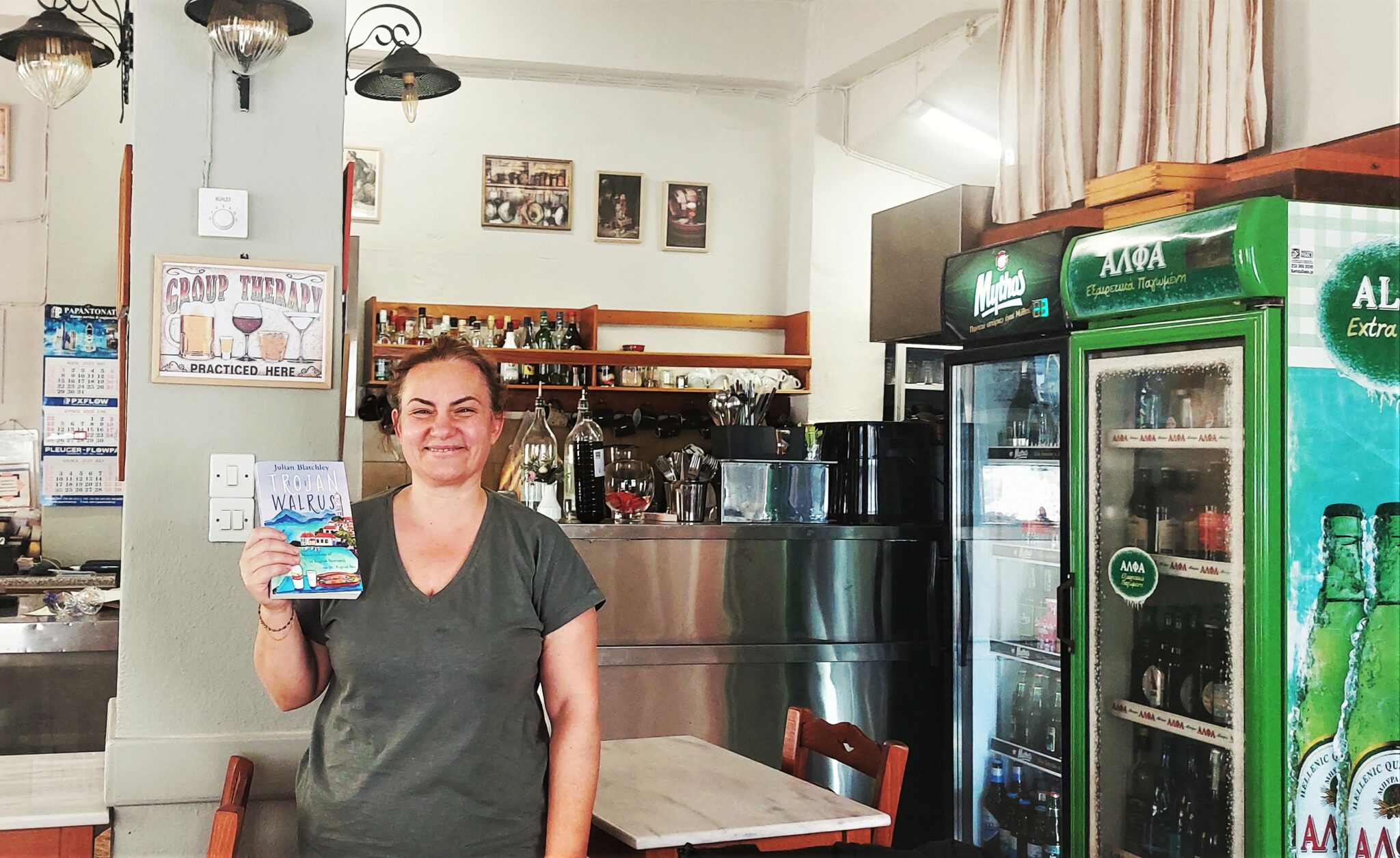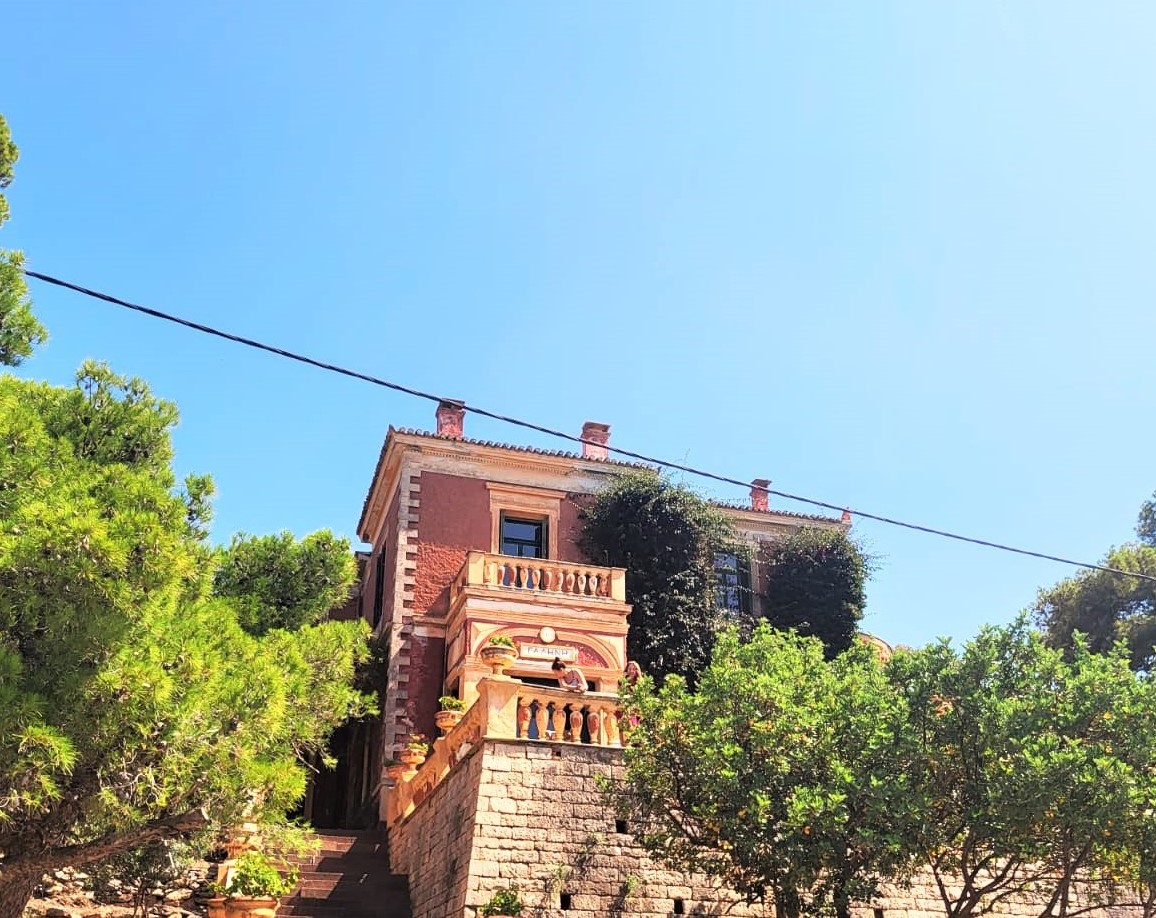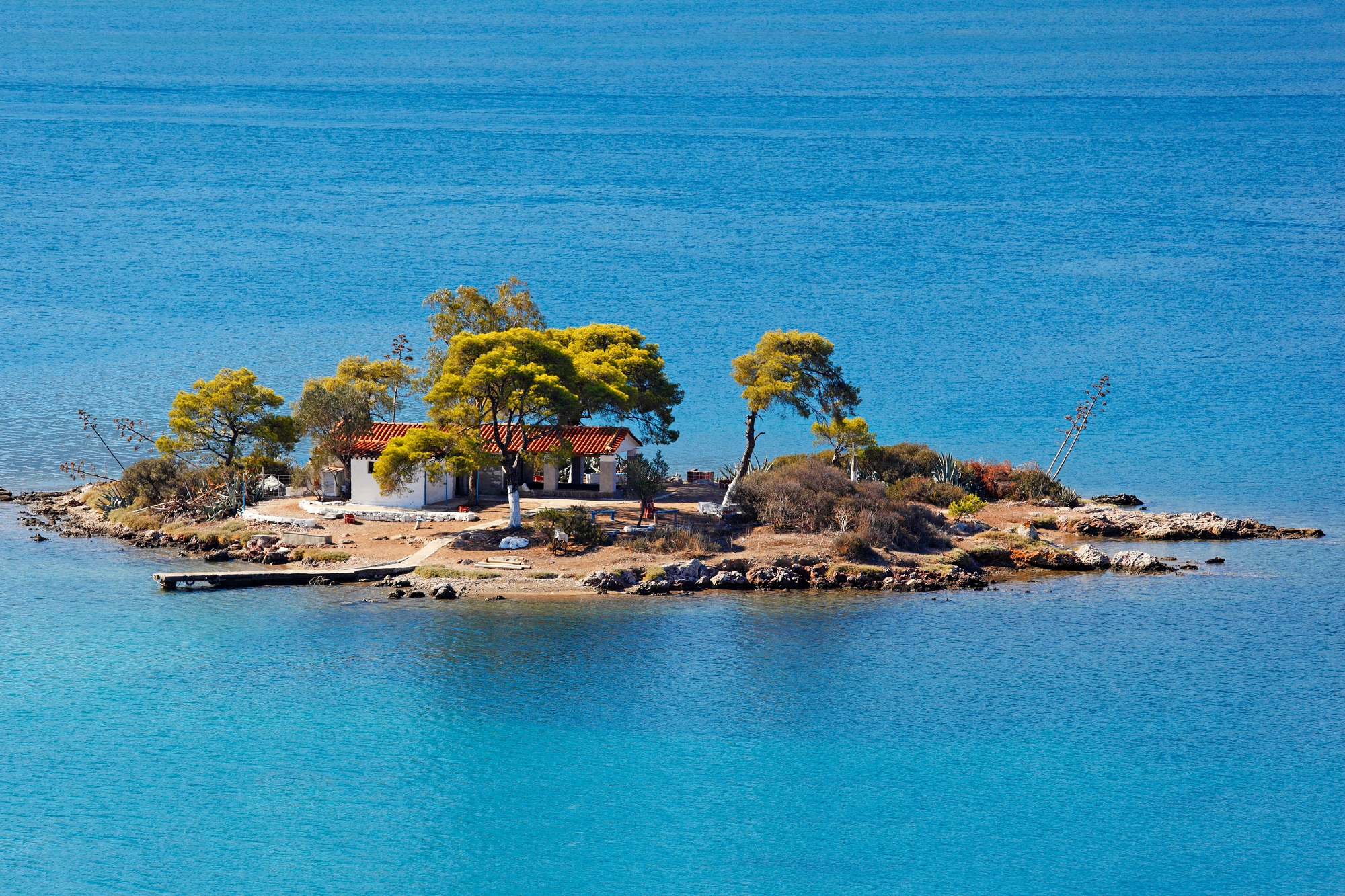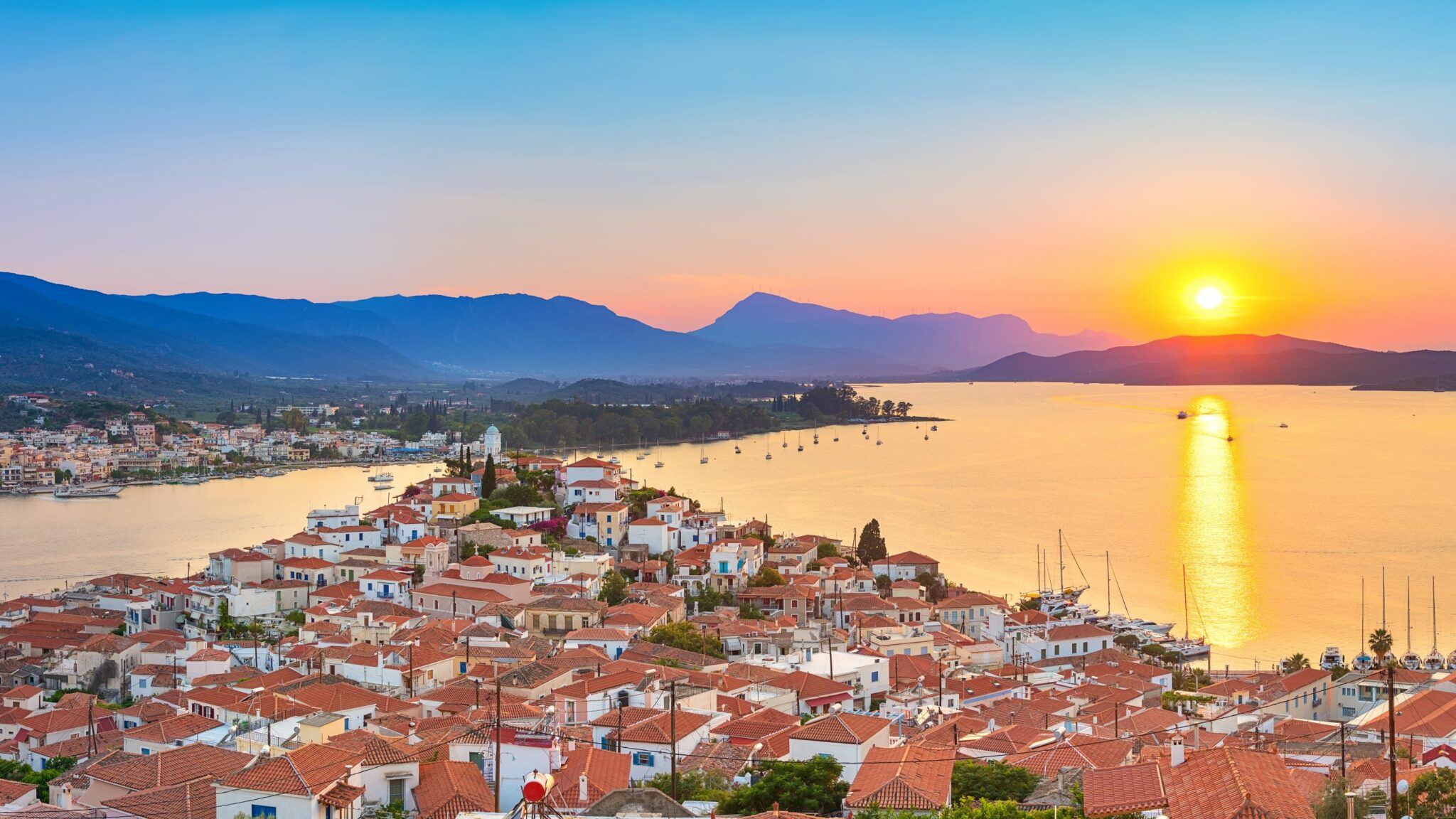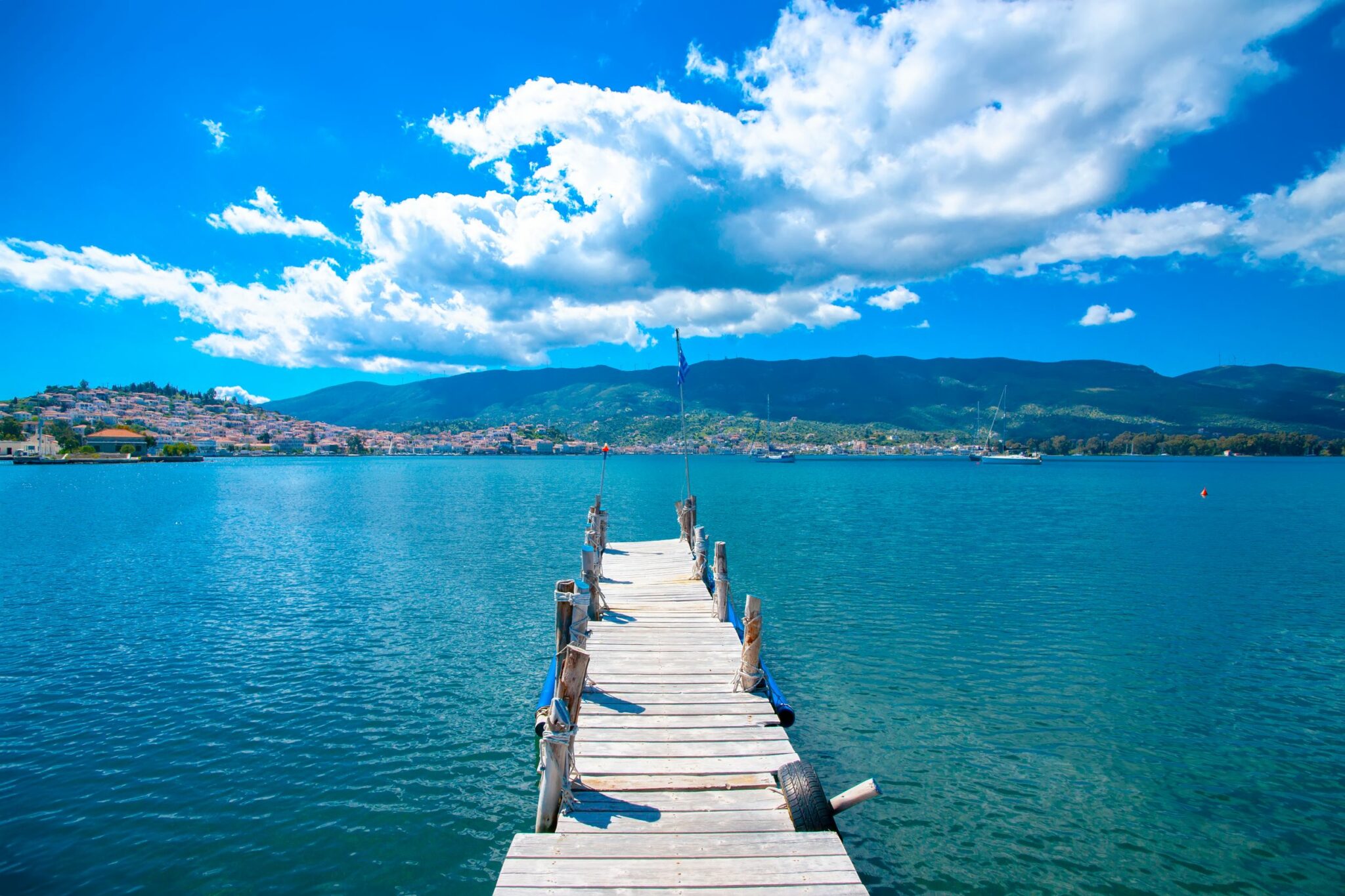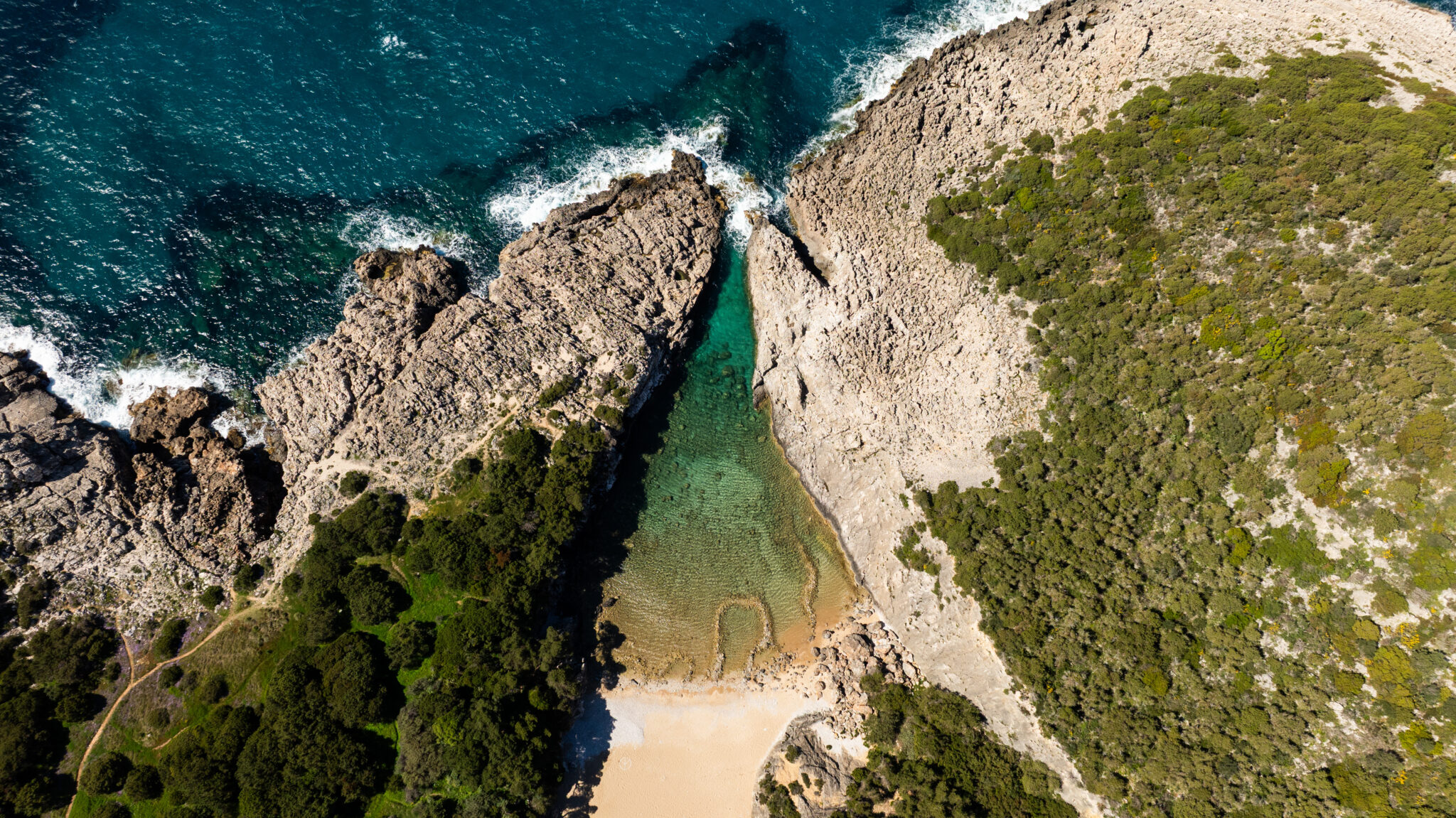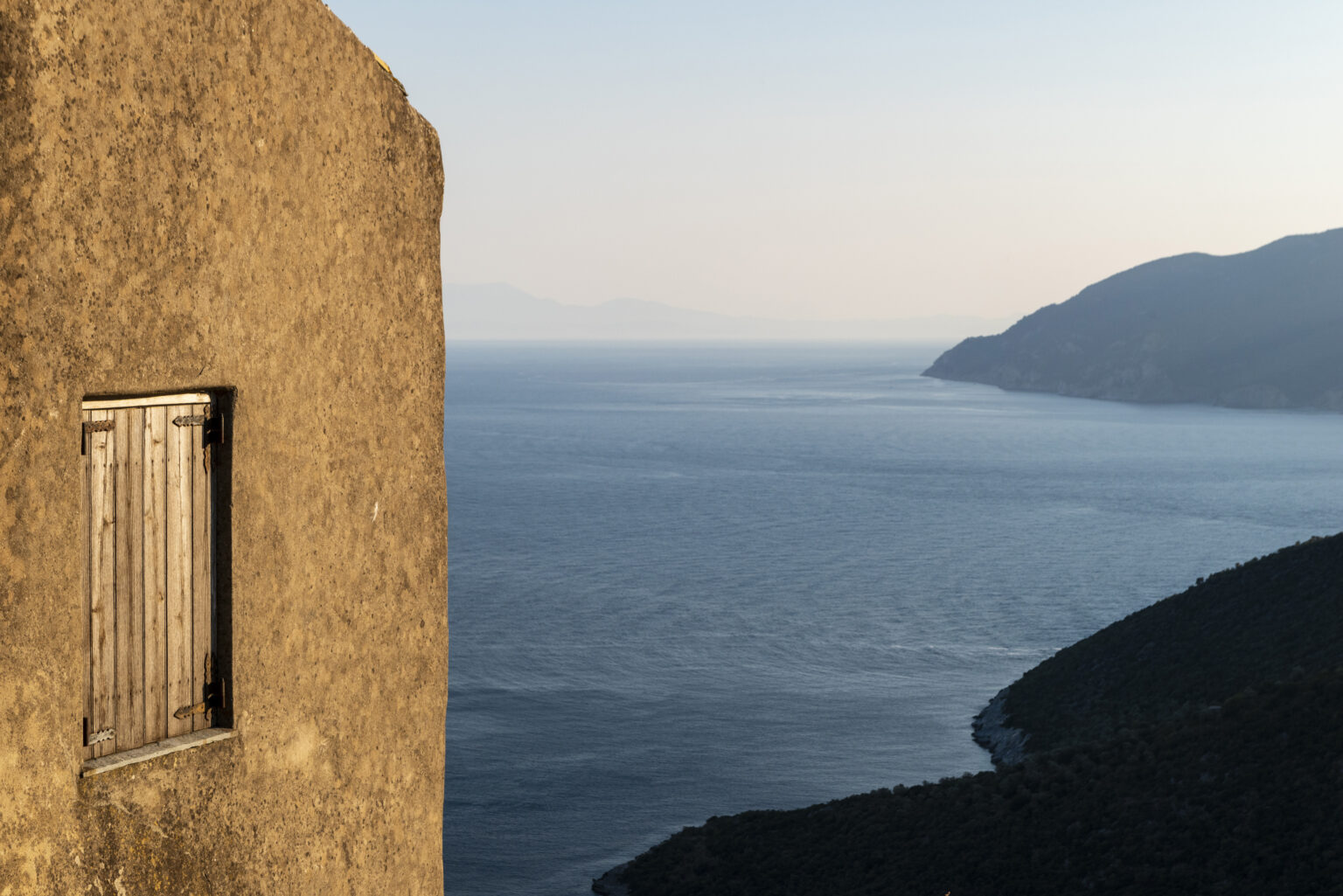In a soft-spoken and genuine voice, Poros invites you to get to know it intimately. It has no vital need for you, but its generosity of spirit and welcoming nature, combined with a well-honed sense of self confidence, make those who appreciate its particular beauty want to return again and again. The quietly lovely Saronic island, only an hour from Athens by boat, is neither glamorous and cosmopolitan like its neighbours, Hydra and Spetses, nor “stunningly beautiful” in the way travel journalists like to loosely name most islands of the Aegean. It has, in recent years been described as a “hidden gem”, probably because it is not as known and tourist-packed as other islands in the vicinity.
In reality, Poros has never hidden from anything, it simply has an energy that doesn’t attract the hordes, neither does it blast visitors with tawdry seduction tactics; instead, with a resilient, silent power, it draws in those seeking what it has to offer and bares its beauty in delicate ways.
On my first visit to Poros in 2011 I only stayed for 24 hours, visiting some friends who were holidaying there. In a short time, I was left with a patchy but powerfully sweet impression of the place. We swam at Kanali beach, that August day cacophonously busy with racquet players and children, and at sunset, we set up some foldable chairs and a little table on a cement pier and ecstatically slurped sea urchins, with a blazing sky as our backdrop. After that, we hopped into our open jeep and dined on a terrace over the water at Aspros Gatos taverna, just across the bridge that separates volcanic Spheria and limestone-rich Kalavria, the two islands Poros is made up of. Plenty of delicious, shared dishes and chilled house wine later, we went to Love Bay, the main town’s other popular beach, where, completely alone, we threw off our clothes and laughingly swam under the stars.
It wasn’t until last summer that I stopped in Poros again, this time as part of a two-week yachting trip around the Cyclades and, on our way back to Athens, the Saronic. After 11 days of diving into deep, dazzlingly crystalline waters, feasting my eyes on fabulous white rock formations in places like Milos, sipping coffee in a cinematic village square in Antiparos while hoping to spot Tom Hanks, and gourmet dining in Sifnos, I stepped off the boat on Poros feeling a little downtrodden because my holiday was reaching its end. Yet the energy of the place quickly charged me with a new feeling, it felt grounding and pacifying, embracing me with its pine-covered hills, neoclassical architecture, cosy, cobblestone backstreets lined with quaint stores, yacht marinas packed with glossy boats and clear, glittering cyan waters; and above all, the familial, understated warmth of its local community – making me want to return again. Not ‘one day…’, but very soon. Henry Miller wrote in The Colossus of Maroussi that “Coming into Poros gives the illusion of the deep dream,” and I now understood what he meant.
As if the universe heard my heartfelt request, the following summer I was offered a job that involved me living on Poros for two weeks while teaching a travel writing course to American university students for the College Year in Athens (CYA), a highly esteemed 60-year-old academic institution. Staying at the 7 Brothers Hotel, a petite, homey, two-storey establishment run by a family, that is as central as you can get in the main town, tucked away one minute from the main harbour, I had the perfect base. Daily, we ate at Sti Rota taverna just downstairs from our accommodations, and in the two weeks that I was there, there wasn’t a day when the varied, abundant menu didn’t please my tastebuds – from moreish, lemon-sprinkled graviera saganaki and crisp courgette ‘kolokythokeftedes’ patties to the creamy, mama-style ‘lachanodolmades’ (cabbage-wrapped meat) and melt-in-your-mouth fried calamari, this restaurant was truly excellent.
Poros is an island that reveals itself to you if you let your senses be guided by its natural pulse, and the best way to connect with that is not only through its landscapes and villages but also through its people. Like islanders everywhere else in Greece, many of the locals here orient their lives towards a tourist season that lasts around four or five months, on a good year. But unlike in other islands, the closely-knit, low-key and friendly community of 4000 gives off the impression that tourism is secondary to local daily life and has not permitted the yearly influx of visitors (around 8000 at peak season) to disrupt their own rhythm and customs. Writer Diane Shugart, who chose to live on Poros for eight years, says “Poros is low-key. Or, as the Greek saying goes, ‘It doesn’t fill your eye’. Yet it managed to hold Seferis, Henry Miller, John Craxton, and Lucien Freud in thrall. It’s a very chill place. Yet it claims an Olympic silver medallist in rowing, one of Greece’s top water ski schools (run by a several times European champion), Citronne, an edgy art gallery, and an annual arts festival. It’s remarkable how Poros slowly evolves with the times yet doesn’t really change. If you compare pictures of the town today and in the 1970s, they’re the same. Maybe that’s the secret of its charm.”
In my daily meanderings, I got to know shop owners in my vicinity on a first-name basis, stopping for chats and cracking jokes, hearing about their lives and thoughts. The backstreet leading from the side of 7 Brothers Hotel was my favourite haunt, where I loved browsing in the Ergani store where they make modern items using traditional weaving techniques or buying a piece of freshly baked ‘sokolatopita’ chocolate pie and a scoop of artisanal vanilla ice cream at Glykisma (Vessala was my second favourite way to satisfy my sweet tooth). Shopping lovers will find plenty of places to keep them busy here, as there is a good variety of quality jewellery, clothes, accessories and décor items to discover.
There are plenty of lively and pretty cafes and tavernas in Poros, but I discovered one where I got to enjoy all the things I love – silence, so that I could work on my laptop, warm hospitality from the owners, who never made me feel uncomfortable when they weaved my laptop charger wire through the door to the nearest plug, a view of the sea and my favourite island appetite-pleaser: a traditional meze plate with spiced souzouk sausage, boiled egg, crisp herbaceous meatballs, juicy tomato and cucumber chunks and tangy goats cheese, accompanied by ice cold Mamos beer. I wasn’t surprised to learn from the owners that ‘Kafeneio I Plateia’ had also been a favourite haunt of author Julian Blatchley, who wrote about it in his book ‘Trojan Walrus’, and in the 70s and 80s a lively haunt for writers and artists.
Staying on the island I also explored various wonderful natural and outdoor locations – hikes up to the emblematic Clock Tower of Poros, the first thing one spots upon arrival by boat, which has proudly stood on the highest hill since 1927 and is an ideal spot for an easy sunset walk; a visit to the historic, red-bricked Villa Galini, where French artist Marc Chagall painted and Greek poet Georgos Seferis wrote “Thrush”; a slightly challenging glow-time trek to the Sanctuary of Poseidon, at an altitude of190 metres in Palatia, between Vigla and the peak of Prophet Elias, from where you can delight in the most majestic sea views; or cycling through the ‘Lemonodassos’ or lemon tree forest, with its old watermills and a waterfall to boot.

One arresting sight that never ceased to impress me was the large, unexpected bundles of naval cadets in their gleaming white uniforms, enjoying time off from the Hellenic Naval Academy. Located in Spheria just before the canal and bridge, the academy is housed in a building that was once the summer palace of King Otto of Greece. With a pang of nostalgia, I remembered my late mother, who like so many of her generation and beyond so adored the old Greek rom-com “Aliki Sto Naftiko”, a film made on Poros starring cheeky blonde Aliki Vouliouklaki and Dimitris Papamichail. It was only one of many classic Greek films shot around the naval academy, Villa Galini and around the island. ‘The Boy on the Dolphin’ with Sophia Loren was also partly shot there.
Poros is an easy island to get around. From the harbour, one can hop onto a large caique and head to beaches like Askeli and Monastiri, the latter particularly beloved by locals, or travel 10 minutes across to the small mainland port of Galatas, which leads to nearby Methana or further into the Peloponnese. From there, Nafplio is around one hour and three quarters drive away, and Athens, two and a half. On foot, with the (free) municipal minibus that circles the island, by car/ taxi or on an electric bicycle (also provided by the municipality at a low cost), there are numerous scenic spots to visit around the island.
Acclaimed Greek poet Liana Sakelliou Schultz, who has a house on Poros and has spent many of her summers there since childhood, aptly describes how the island’s most simple elements define what makes people fall in love with it, in describing her favourite ways to enjoy it: “I like to swim at the beach just below the Monastery and to drink fresh orange juice at a small café across from it because there are trees all around, and you can hear the water of a small stream in a gorge below. I also love my favourite rock, the Lion, because of its location, historical importance and emblematic nature. As a child, I used to visit the remote shores of Poros and dive among the rocks. The seabed is extraordinary there, and was the subject of many of my poems. I love walking along the seafront promenade across the village, looking at many boats of different kinds, smelling grilled octopus, and hearing people having fun.”
Poros is an island that I’m confident I will revisit again and again, and in writing this I am almost tempted to ask readers not to visit, for the fear that if it will one day become one of those “undiscovered” islands that suddenly becomes “well known”, losing, like so many Greek islands sadly have, its exceptional identity. However, I hope that its people will prevent any such event from ever happening, while simply continuing to gracefully welcome those coming to experience the island’s singular beauty, of which there is plenty of it to go around.



